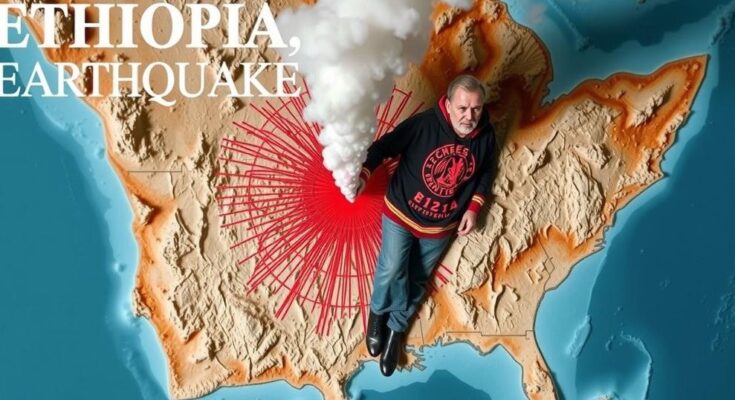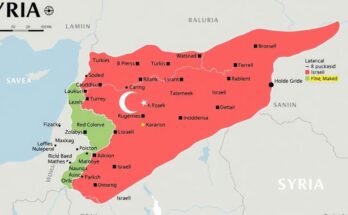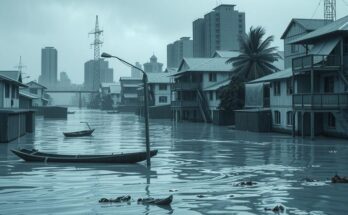A magnitude 5.5 earthquake struck northern Ethiopia alongside a volcanic eruption, leading to evacuations but no reported injuries. The seismic activity has caused extensive damage, with many houses collapsing as tremors increase in frequency and intensity.
On Friday, a magnitude 5.5 earthquake struck northern Ethiopia, coinciding with a volcanic eruption in the region following months of increased seismic activity, as reported by the European-Mediterranean Seismological Centre (EMSC). Fortunately, there have been no reported injuries. The volcanic eruption occurred early in the morning near Segento in the northeastern Afar region, as confirmed by local official Aden Bela. Although the crater had ceased emitting smoke, lava continued to flow, necessitating the evacuation of residents and livestock.
Since late September, the U.S. Geological Survey has detected over 67 earthquakes in the vicinity, particularly in the Fantale area within the Great Rift Valley. Local accounts indicate that this seismic activity has caused substantial damage, with reports of more than 30 houses having collapsed and a notable increase in the frequency and intensity of tremors. One resident lamented the continuous deterioration, stating that “houses are collapsing day by day.”
Ethiopia has been experiencing a series of seismic events, including earthquakes and volcanic activity, particularly in the Great Rift Valley, where tectonic activity is prevalent. The region is characterized by a complex interaction of tectonic plates, leading to frequent geological disturbances. The recent earthquake and volcanic eruption underscore the ongoing geological instability in northern Ethiopia, prompting concerns for safety and environmental impact.
The recent magnitude 5.5 earthquake in northern Ethiopia and the subsequent volcanic eruption highlight the ongoing geological threats faced by the region. While there have been no reported casualties, the seismic activity has resulted in significant structural damage, prompting evacuations to protect human and animal life. The situation remains critical, requiring close monitoring and an effective response to ensure the safety and well-being of affected communities.
Original Source: news.az




